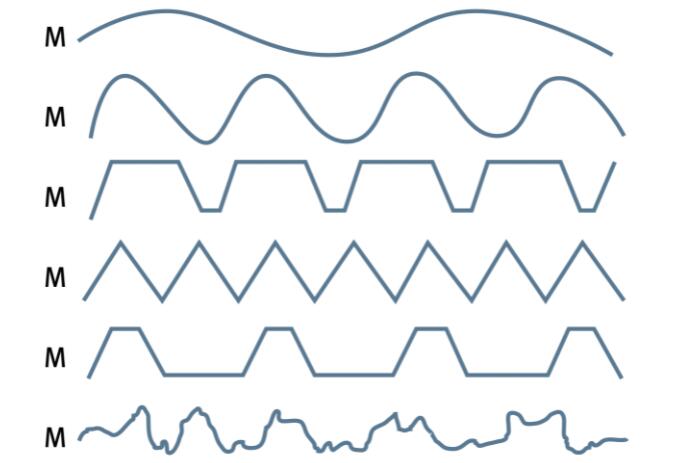How to Calculate Surface Roughness – 5 Methods of Roughness Calculation
Surface roughness, often shortened to roughness, how it is calculated? Let's take a look at five methods of surface roughness calculation.

How to Calculate Surface Roughness – 5 Methods of Roughness Calculation
1. Comparative method
It is used for workshop field measurement and is commonly used for the measurement of medium or rough surfaces. The method is to compare the measured surface with the roughness sample plate marked with a certain value to determine the roughness value of the measured surface.
2. Stylus method
The surface roughness uses a diamond stylus with a tip radius of curvature of about 2 microns to slide slowly along the measured surface. The up-and-down displacement of the diamond stylus is converted from an electrical length sensor to an electrical signal. After amplification, filtering, and calculation, the surface roughness value is indicated by the display instrument, and the measured profile curve can also be recorded by a recorder. Generally, measuring tools that can only display surface roughness values are called surface roughness measuring instruments, and those that can record surface profile curves are called surface roughness profilers. These two measuring tools have electronic computing circuits or computers, which can automatically calculate the arithmetic mean deviation Ra of the contour, the ten-point height Rz of the micro unevenness, the contour * large height Ry and many other evaluation parameters. They have high measuring efficiency and are suitable for measuring the surface roughness with Ra of 0.025-6.3 microns.
3. Light sectioning
The light band formed after passing through the slit projects onto the surface to be measured, and the surface roughness is measured by the contour curve formed by its intersection with the surface to be measured (Fig. 3). After the light emitted from the light source passes through the condenser, slit and objective lens 1, the slit is projected to the surface to be measured at an angle of 45 ° to form a profile figure of the surface to be measured, and then the figure is magnified by objective lens 2 and projected onto the reticle. Use the micrometer eyepiece and the reading drum to read the h value first, and then calculate the H value. The surface roughness measuring tool using this method is called a light-cutting microscope. It is suitable for measuring the surface roughness of RZ and Ry of 0.8~100 μ m, which requires manual point taking and has low measurement efficiency.
4. Interferometry
The shape error of the surface to be measured is displayed in the form of interference fringes using the principle of light wave interference (see flat crystal and laser length measurement technology), and the microscopic part of these interference fringes is magnified by a microscope with high magnification (up to 500 times) for measurement to obtain the roughness of the surface to be measured. The surface roughness measuring tool using this method is called an interference microscope. This method is suitable for measuring surface roughness with Rz and Ry of 0.025 ~ 0.8 μ m.
5. Selection of surface roughness
The selection of surface roughness parameters should not only meet the functional requirements of the part surface but also consider economic rationality. The specific selection can be determined by analogy with reference to the existing drawings of similar parts. On the premise of meeting the functional requirements of parts, the larger surface roughness parameter value should be selected as far as possible to reduce the processing cost. Generally speaking, the working surface, mating surface, sealing surface, and friction surface with high movement speed and high unit pressure of parts require high smoothness of the surface, and the parameter value should be smaller.
